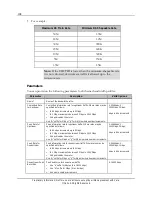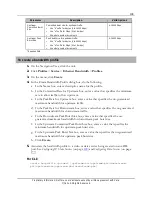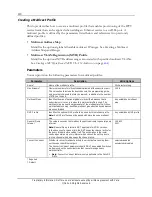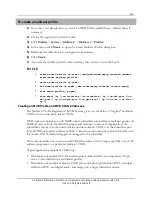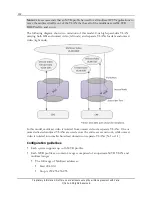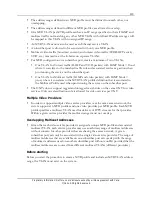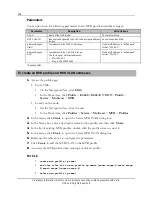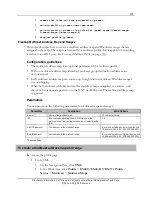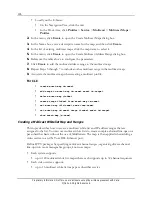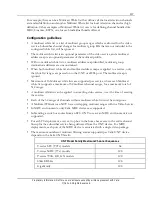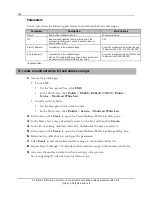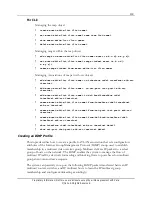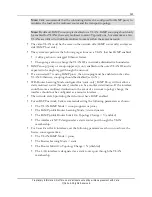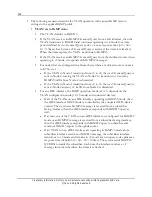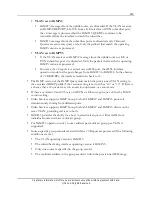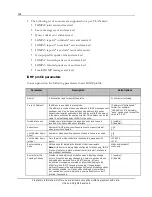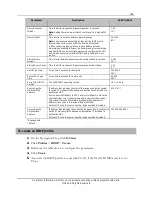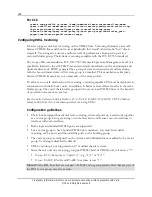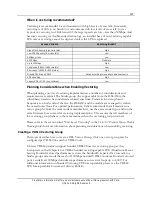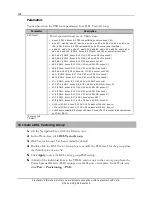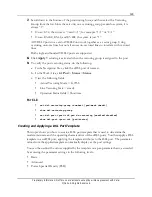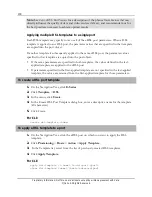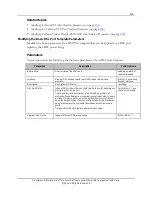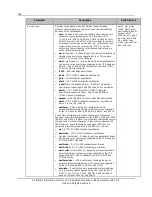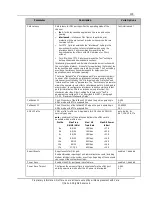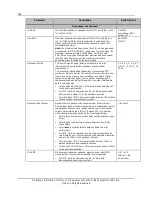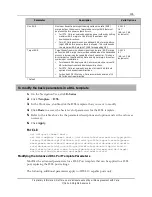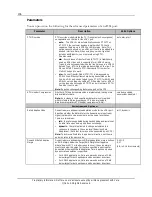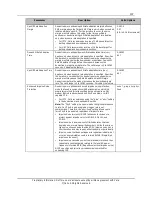
122
Proprietary Information: Not for use or disclosure except by written agreement with Calix.
© Calix. All Rights Reserved.
The following scenarios describe the VLAN operation with various IGMP version
settings in the applied IGMP profile.
VLAN set to IGMP Auto:
The VLAN defaults to IGMPv3.
If the VLAN receives an IGMPv2 General Query from a GE interface, then the
VLAN transitions to IGMPv2 and continues operating in v2 mode for a time
period defined by two General Query a max response time (60 + 60 +
10 = 130sec). Each time a v2 General Query is received, the timer is refreshed.
When the timer expires, the VLAN transitions to IGMPv3.
If the VLAN receives an IGMPv3 General Query from the multicast router when
operating in v2 mode, it responds with IGMPv2 messages.
For nodes that are configured in a linear chain, where a multicast router connects
to E7 Node 1:
♦
If the VLAN in Node 1 transitions from v3 to v2, then a v2 General Query is
sent to Node 2, forcing the VLAN in Node 2 to transition to v2 and any
IGMPv3 traffic from Node 2 is discarded.
♦
If the VLAN in Node 1 transitions from v2 to v3, then a v3 General Query is
sent to Node 2 and any v2 traffic from Node 2 is discarded.
For an xDSL interface, the IGMP operation mode (v2/v3) depends on the
VLAN configuration mode (v2, v3 mode) and connected devices:
♦
If all of the VLANs on an xDSL interface operating in IGMPv3 mode, then
the xDSL interface IGMP mode is controlled by the connected STB/device
version. That is, when a IGMPv3 message is received from a subscriber
facing interface, then the xDSL interface responds with IGMPv3 query as
well.
♦
If at least one of the VLANs on an xDSL interface is configured for IGMPv2
mode or an IGMPv2 message is received from a subscriber facing interface,
then the xDSL interface responds with IGMPv2 query to subscriber and
sends out IGMPv3 report to the uplink router.
♦
If all VLANs on an xDSL interface are operating in IGMPv3 mode and a
subscriber interface receives an IGMPv2 message, the subscriber interface
transitions to v2 mode and remains in v2 mode for two query cycles plus max
response time (default: 60 + 60 + 10 = 130sec). The system sends IGMPv2
QUERYs towards the subscriber. Each time the interface receives a v2
message from the subscriber, the timer is refreshed.

